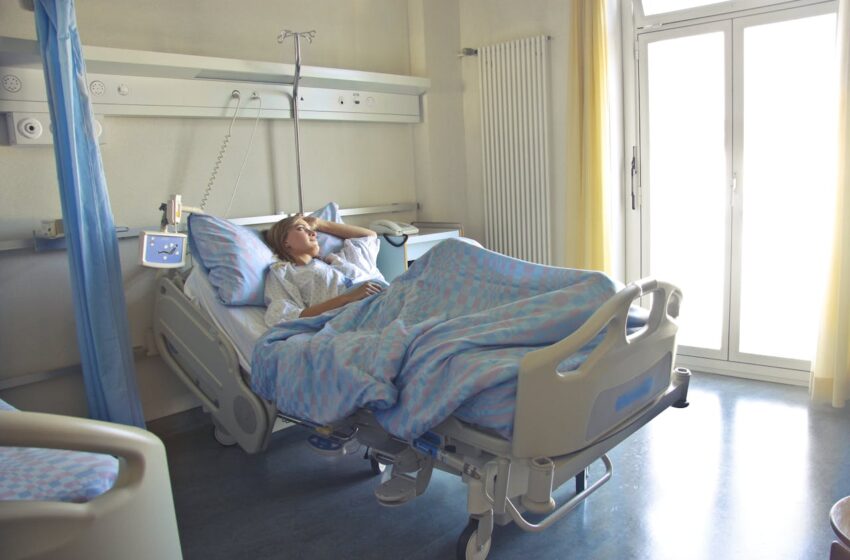UK NHS Health Plan: How it impacts patients and providers

A patient lying down in a hospital room
The future of healthcare in England is here. On July 2nd, 2025, Prime Minister Keir Starmer unveiled a landmark 10-year plan, “Fit for the Future,” designed to “fundamentally rewire” the NHS and bring care closer to home for millions of patients. This ambitious strategy aims to tackle crippling hospital waiting lists and empower individuals with more accessible, convenient, and proactive healthcare.
Shifting focus: From hospital to neighbourhood
At the heart of this transformative plan is the creation of a new network of neighbourhood health hubs. Approximately 200 of these centres will be established across England over the next decade, staffed by multidisciplinary teams including GPs, nurses, social care workers, pharmacists, and mental health specialists. The goal is to move the majority of outpatient care away from traditional hospitals by 2035, encompassing scans, mental health checks, eye examinations, and post-surgery follow-ups.
Sir Jim Mackey, the new chief executive of NHS England, highlighted the necessity of this shift: “We have a model that is built on the default of hospitalisation, and it’s just not right for them.” These new centres, eventually open 12 hours a day, six days a week, will adapt their services to local needs, with some even offering outreach teams for vulnerable patients. Beyond core medical services, some hubs may also provide holistic support like debt advice, employment assistance, stop smoking clinics, and weight management classes, reflecting a broader approach to wellbeing.
Addressing the waiting list crisis
Health Secretary Wes Streeting emphasized that this plan is crucial for bringing down “devastating hospital waiting lists” which currently stand at 7.39 million people waiting for operations or planned appointments in England. Streeting promised that voters would “begin to see and feel” the changes, with the new centres prioritising areas with the highest levels of need and those currently underserved.
This focus on community care is also intended to alleviate pressure on hospitals, allowing them to concentrate on acute and emergency services. The government aims for a significant reduction in waiting times, with a target to treat 92% of patients within 18 weeks of referral by 2029.
Innovation and prevention: The digital and proactive NHS
Beyond the physical hubs, the 10-year plan outlines two other “big shifts”:
- Analogue to Digital: The NHS will embrace technology, with GPs encouraged to use Artificial Intelligence (AI) for patient notes and new systems introduced to speed up call answering at surgeries. The NHS App will play a central role, allowing patients to book appointments, communicate with professionals, and access their care plans.
- Sickness to Prevention: A greater emphasis will be placed on preventing illness rather than just treating it. This includes earlier detection, promoting healthy lifestyles, and integrating services that address social determinants of health.
Read Also: UK vs US: Which has the best healthcare system?
Challenges and the path forward
While the ambition of the plan has been welcomed by many, including Thea Stein of the Nuffield Trust who called it the “right aspiration,” significant challenges remain. Concerns have been raised by professional bodies such as the Royal College of Nursing and the British Medical Association about the “depleted and undervalued” nursing workforce and the lack of clarity on staffing and funding for these new services. The Royal College of GPs also highlighted the dire need for renovation in many existing GP practices and a shortage of newly-qualified GPs.
The government maintains that the £29 billion boost to NHS funding announced in the last Budget will finance the new services, and a workforce plan is expected later this year to address recruitment. However, critics, including the Health Service Journal, have noted the absence of a detailed delivery strategy within the 168-page document, with Sir Jim Mackey stating it’s designed to create “energy and enthusiasm” rather than guidance.
Despite these challenges, there’s a consensus that radical action is needed. Matthew Taylor of the NHS Confederation warned that “without the radical action outlined in this plan, the NHS as a universal service is in unprecedented danger.” The success of this ambitious “rewiring” will depend on sustained investment, effective workforce planning, and a seamless transition from vision to tangible reality for patients across England.



